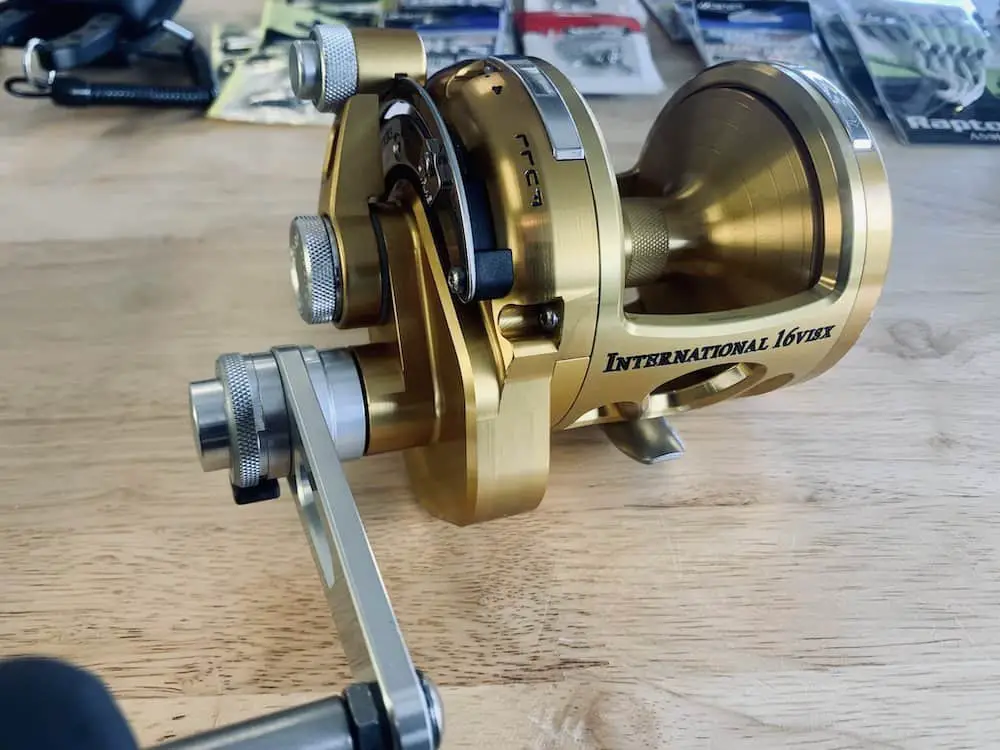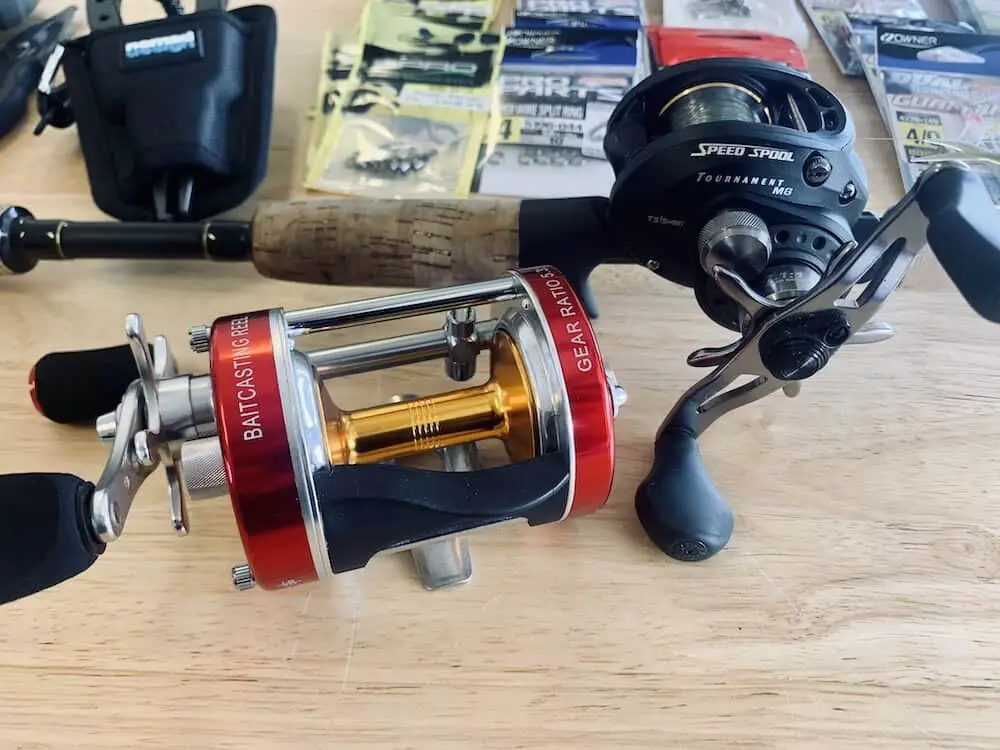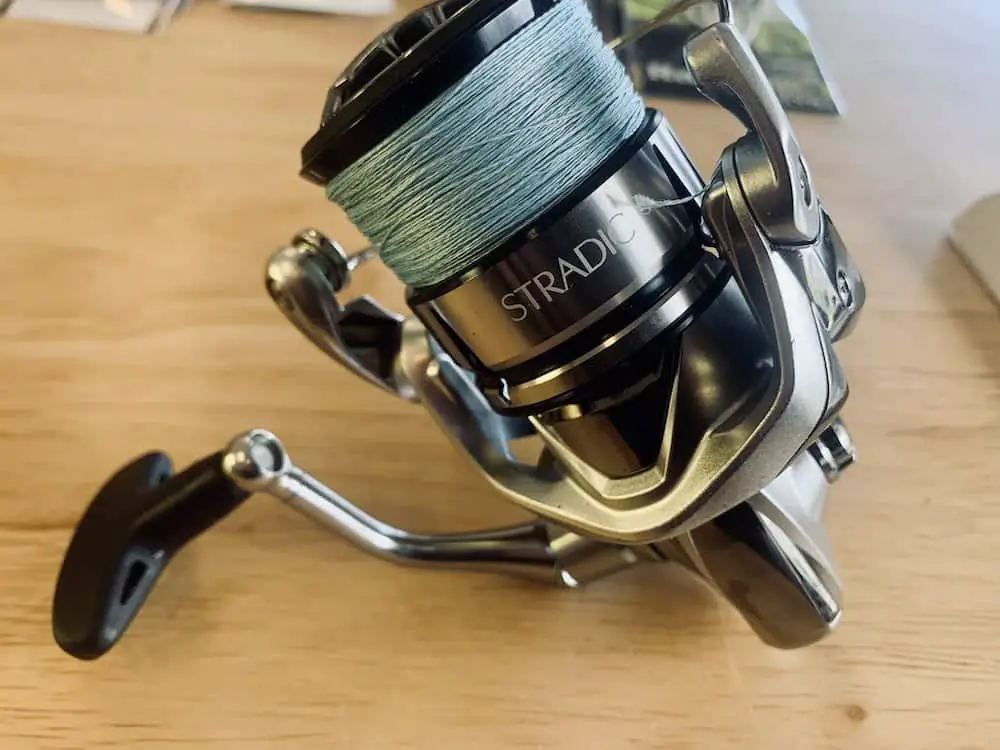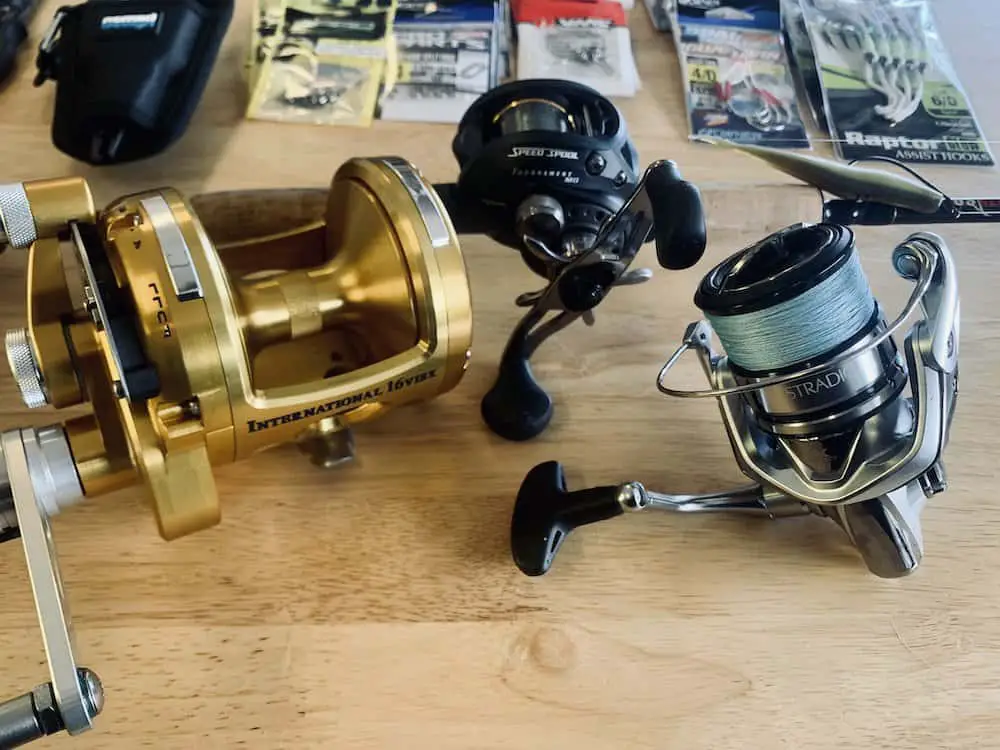For novice anglers, and even intermediate anglers, reels can be confusing to choose. There is a myriad of types, each with its intended purpose, which can be complicated to figure out at first. Someone trying to outfit his or her boat with a variety of setups for different techniques, would have their hands full sorting it out. This article will tackle some common questions related to trolling reels, in the hopes that I can help you guide you towards a technically correct, and effective setup.
Can Trolling Reels Cast?
There are several different types of reels, each with design features that make them ideal for different scenarios. Anglers will have the best success when using the right tackle for the technique, however this is not always realistic considering the cost of fishing gear. If you have a trolling reel and are looking to do sight casting to tuna offshore, you may wonder if you need another setup or if trolling reels can work for casting. Trolling reels can cast if necessary, however, it is not advisable because they are heavy, designed without a braking system, and are difficult to switch from freespool to retrieve. Casting reels are lightweight, have brakes and easy methods of locking the line out after a cast. Read on to learn why these design features matter when casting.
Casting is a technique in which the angler puts the reel in freespool, casts the lure out to a target location, and then retrieves the lure while working the rod for a specific presentation. The rod is often worked up and down or twitched to the side during the retrieve. This cast and retrieve pattern is normally repeated until a strike occurs. As you might imagine, this can get tiresome if your rod and reel is heavy. Trolling reels, such as the Penn International VIS, are normally bulky and heavy, making it difficult to get a comfortable grip for casting.

Low profile baitcasting reels, such as the Penn Squall Low Profile Baitcasting Reel, are intended to be held in the palm of your hand, thumb on the spool, during casting and retrieving. The ergonomics make it easier to repeat the cast and retrieve pattern for hours. A baitcasting reel’s casting accuracy is unmatched, however, many anglers forego the use of a baitcasting reel in favor of using a spinning reel because of the baitcaster’s tendency for birds’ nests.
A bird’s nest, a tangled mess of line on the spool, occurs when the spin rate of the spool exceeds the speed in which the line comes off the spool. Brakes prevent bird’s nests by slowing the spin rate of the spool, but most baitcasting reels also require thumb pressure from a skilled angler to fully prevent a bird’s nest. A bird’s nest can be especially difficult to prevent when using lightweight lures. A trolling reel works in a similar way to a baitcasting reel, making it easy for the spool rotation speed to outpace the line release pace. The downside is, there’s no braking system at all on a trolling reel, so only very experienced anglers would likely be able to avoid a bird’s nest if casting with it.
A spinning reel, like the Shimano Stradic, is easy to cast, handles lightweight lures well, but does not get the same casting distance as a baitcaster. With a spinning reel, the spool’s axis is parallel to the rod and the line comes off in a spiral, causing more friction as the line leaves the spool. In a baitcasting reel, the spool’s axis is perpendicular to the rod and the line comes off straight. A spinning reel may have slightly less casting distance than a baitcaster because of the way the line comes off the spool, but its simplicity and ease of use makes it a favorite for many anglers.
When using a spinning reel, the line is locked out as soon as the angler turns the handle forward to retrieve on some reels, or as soon as the bail is flipped forward. When using a baitcasting reel, the line is locked as soon as the angler’s thumb, or finger, depending on switch placement, is lifted off the freespool switch. Both movements are natural motions and easy to transition to after the cast. If you were using a trolling reel for casting, you would have to push the lever forward out of the freespool position to engage the anti-reverse. This maneuver would be too difficult to do over and over for repetitive casting. If you've started your search for a trolling reel and need help learning about the design features, read my article here.
Can I Troll With a Baitcaster?
Trolling reels and baitcasting reels are both considered conventional reels, however they have small differences that make them ideal for very different techniques. Trolling reels are designed with high drag to fight big fish and high line capacity for long troll lines and deep troll lines. Baitcasting reels are designed to be lightweight enough to hold in your hand and cast for hours, and designed for casting accuracy. Baitcasters can be used for trolling if there is enough line capacity and enough drag for the target species. Round style baitcasters more likely have the necessary line capacity and drag. Low profile baitcasters have minimal line capacity and would be a bigger challenge to use for trolling. If you must use a baitcaster for trolling, read on to find out which type of baitcaster would be best and what to watch out for.
Trolling requires high line capacity. The line is let out a long ways behind the boat, usually with a crankbait or some other lure at depth, so a lot of line is needed simply to get the lure in the right placement. The targeted fish are normally large and hard striking fish that will put up a strong fight and run. Your reel needs to have enough line capacity to handle both things, and handle higher strength line. The higher strength line is larger in diameter, and takes up more space on the spool. A low profile baitcaster will struggle in this area since they usually have less line capacity and are normally designed for lighter test line. A round style baitcaster will likely have adequate capacity.

Baitcasters are commonly designed with star drag systems, whereas trolling reels are commonly designed with lever drag systems. Star drag systems consist of drag washers and friction plates on the main drive train to prevent or slow the release of line from the spool. Lever drag systems consist of drag washers mounted directly against the side of the spool. The surface area of drag washers is much greater on lever drag systems, allowing the drag pressure to be higher while still preventing the washers from overheating. When trolling, fish will strike the lures hard, and fight hard, so higher line strength and higher drag is required. Depending on your fishery, the max drag on a baitcasting reel may still be enough to withstand the hard strikes during trolling. Most likely, a round style baitcaster, such as the Shimano Calcutta 400B, will have enough max drag for trolling, but I would recommend being cautious about overheating. The star drag washers are smaller than lever drag washers and will struggle to release the heat generated by a running pelagic.
A levelwind feature is not necessary for trolling and in fact, is sometimes undesirable for trolling. When a large fish strikes a trolling lure, and takes off with it, the speed in which the line leaves the spool can be surprisingly fast. A levelwind can struggle to keep up and can even break when this happens. A broken levelwind has the potential to snap off your line and cause you to lose the fish of a lifetime. This is the reason why you’ll rarely see a levelwind feature on a true trolling reel. Baitcasters on the other hand, most often have levelwinds. This would be something to be cautious about when using a baitcaster for trolling. It is not recommended to use a levelwind baitcasting reel when targeting large, pelagic fish with offshore trolling.
Typically, when trolling, rods and reels are held in rod holders and a clicker feature on the reel audibly alerts the angler when a strike occurs. If you’re trolling with a baitcaster and it doesn’t have a clicker, you’ll need to visually monitor the reel to prevent getting spooled. The
When trolling with a baitcaster, I would recommend using the Shimano Calcutta 400B, although the better reel is a true trolling reel and the Penn International VISX is the best one. To read why, check out my article Top Notch Trolling Reels That Will Last for Generations!
Can Spinning Reels be Used for Trolling?
Nearly all anglers have a spinning setup available. It’s often the first setup anglers buy. Spinning rods and reels are easy to use a versatile enough to handle jigging and casting from a boat or shore. As anglers progress their techniques, a common question asked is whether you can use spinning reels for trolling. Yes, spinning reels will work for trolling, however a few downsides exist. The spinning reel should hold enough line and have high enough drag. Specifically, the spinning reel should be an 8000-18000 series reel with at least 400 yards of 50 lb test braided line capacity.In this article,I’ll cover the disadvantages of using a spinning reel for trolling, such as reel placement, drag adjustment method, line capacity, and gear ratio.
When trolling, you’re likely targeting larger fish that will fight hard. If using a conventional reel, the reel and line are on top of the rod and if extra leverage is needed, its ok to lean the rod on the edge of the boat. If you’re trolling with a spinning reel, this support is not a viable option. Spinning reels, the spinning rod guides, and line are mounted on the underside of a rod, which means you would be pinching the line against the edge of the boat and hindering your fight instead of helping it.

In my article, Inshore Trolling How to Plus Must Have Lures, the tactics of using spinning tackle for inshore trolling are discussed in detail, so check it out!
Trolling also requires heavy drag for the hookset on a hard striking fish and the hard fight to reach the boat. Trolling is usually done with trolling reels designed with strong lever drag systems with high max drags and high heat dissipation abilities. The drag is set at the strike position for the troll and is able to be increased to full drag simply by pushing the lever forward. Spinning reel drags can be plenty high to handle large pelagic fish. For example, the Shimano Stella SW 14000 has 55 lbs of max drag. The disadvantage with a spinning drag system when compared with a lever drag system on a trolling reel, is the difficulty of adjusting it. The angler needs to let go of the handle, grab the drag adjustment knob on the top of the spinning reel, and turn it clockwise to increase the drag. It can be risky to hold the setup with one hand when fighting strong fish.
High line capacity is also a design feature of trolling reels. Spinning reels cannot carry nearly as much line as a trolling reel, so you’ll need to be aware of how close you are to the limit when letting line out. You’ll need to keep a reserve amount on the spool for the big fight. To be more specific, when comparing the Shimano Stella SW 14000 50 lb test braided line capacity with the Penn International 12 VI, the Stella holds 400 yards while the International holds a whopping 840 yards.
Trolling reels are also often found in two speed variations. The low gear ratio tends to have much faster retrieve rates to help reel in the high amount of line quickly. The high gear ratio puts up a fight against large and strong fish. Spinning reel gear ratios, and therefore spinning reel power, is lower than traditional trolling reels. This is most likely a minor issue unless your fish is so big that it’s maxing out the capability of your spinning reel.
I’m confident this article helped you learn about using different types of reels for trolling. While you’re here and learning more about trolling, check out my article on the Best Tuna lures for Trolling, Casting, and Jigging. Tight lines, y’all!
Recent Posts
Fat Cow Jig Strips: The Ultimate Bucktail Jig Upgrade for Surf Fishing
As discussed in my previous article, "Surf Fishing with Bucktail Jigs: Ultimate Guide for Beach Anglers," bucktail jigs are a staple in any surf angler's tackle box, offering a versatile way to catch...
In my previous article, "Surf Fishing with Bucktail Jigs: Ultimate Guide for Beach Anglers," I introduced you to the bucktail jig and discussed how versatile of a lure it is for catching a wide range...

